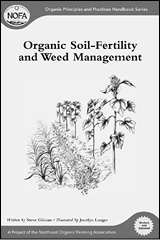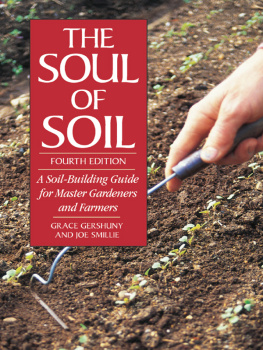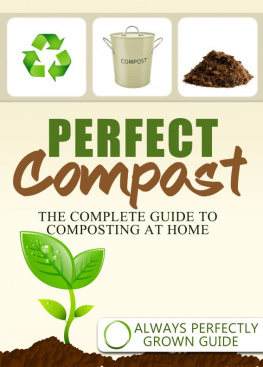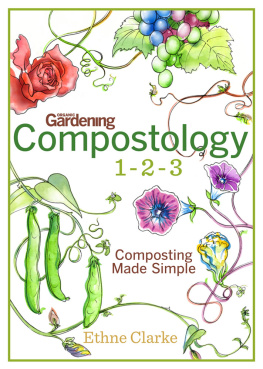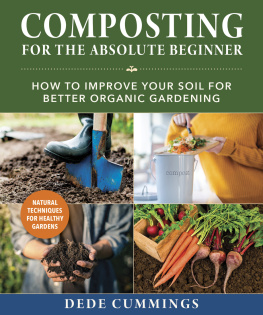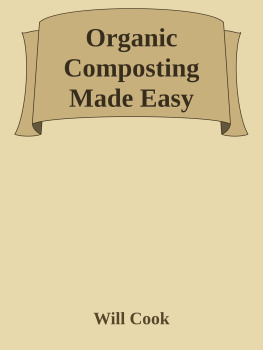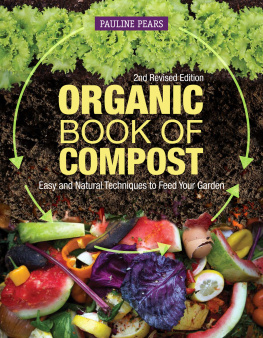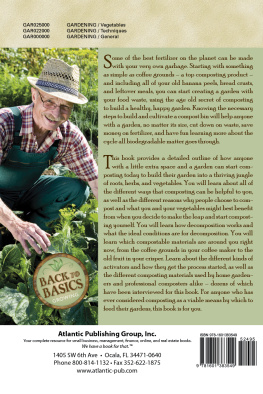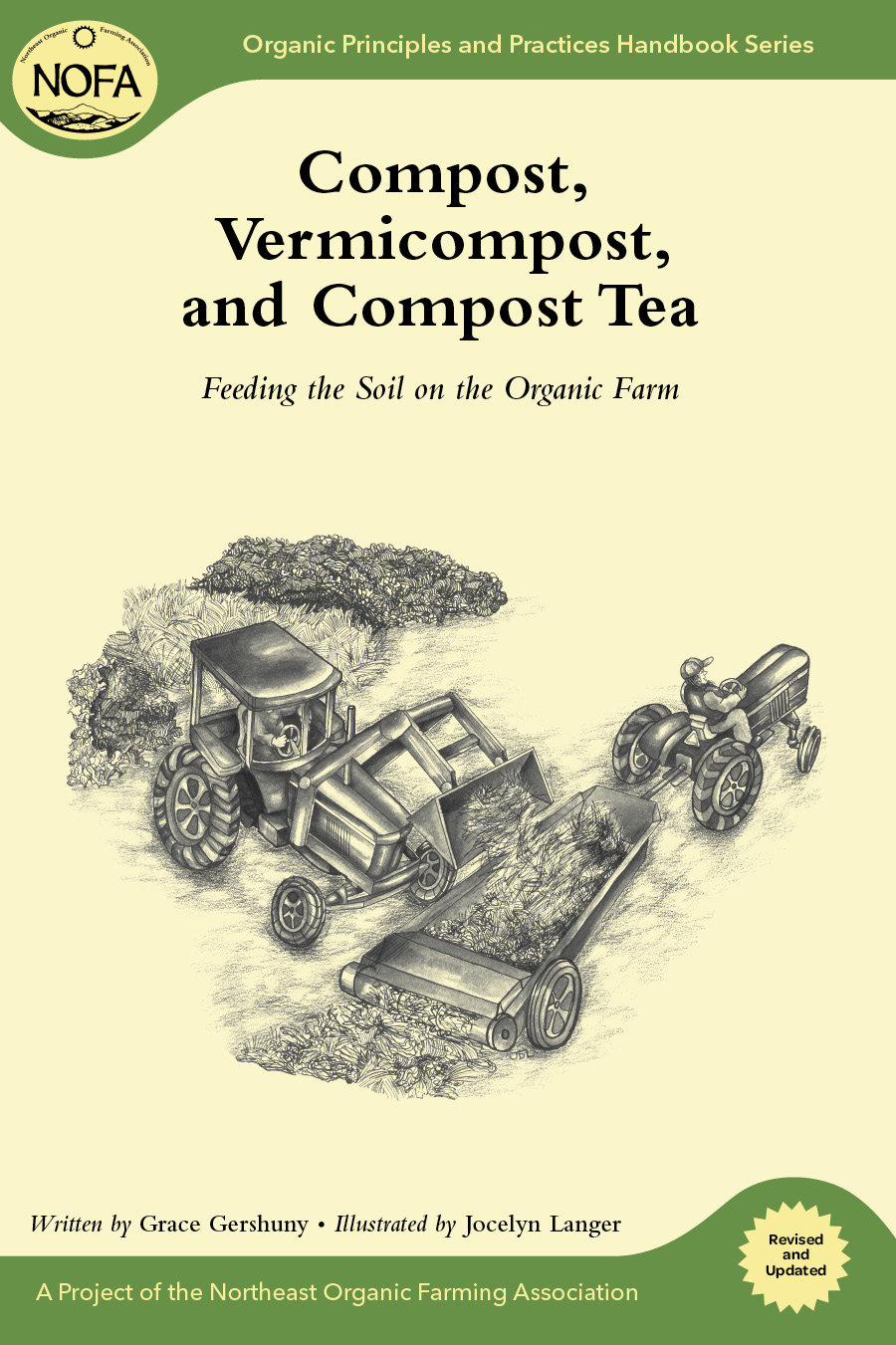
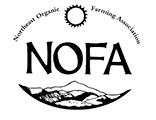
Organic Principles and Practices Handbook Series
A Project of the Northeast Organic Farming Association
Compost, Vermicompost, and Compost Tea
Feeding the Soil on the Organic Farm
Revised and Updated
Grace Gershuny
Illustrated by Jocelyn Langer
Chelsea Green Publishing
White River Junction, Vermont
Copyright 2004, 2011 by the Northeast Organic Farming Association Interstate Council.
All rights reserved.
No part of this book may be transmitted or reproduced in any form by any means without permission in writing from the publisher.
Editorial Coordinator: Makenna Goodman
Project Manager: Bill Bokermann
Copy Editor: Cannon Labrie
Proofreader: Helen Walden
Indexer: Peggy Holloway
Designer: Peter Holm, Sterling Hill Productions
Printed in the United States of America
First Chelsea Green revised printing March, 2011
10 9 8 7 6 5 4 3 2 1 11 12 13 14
Our Commitment to Green Publishing
Chelsea Green sees publishing as a tool for cultural change and ecological stewardship. We strive to align our book manufacturing practices with our editorial mission and to reduce the impact of our business enterprise in the environment. We print our books and catalogs on chlorine-free recycled paper, using vegetable-based inks whenever possible. This book may cost slightly more because we use recycled paper, and we hope youll agree that its worth it. Chelsea Green is a member of the Green Press Initiative, a nonprofit coalition of publishers, manufacturers, and authors working to protect the worlds endangered forests and conserve natural resources. Compost, Vermicompost, and Compost Tea was printed on Joy White, a 30-percent postconsumer recycled paper supplied by Thomson-Shore.
Library of Congress Cataloging-in-Publication Data
Gershuny, Grace.
Compost, vermicompost, and compost tea : feeding the soil on the organic farm / Grace Gershuny ; illustrated by Jocelyn Langer. -- Updated.
p. cm. -- (Organic principles and practices handbook series)
A Project of the Northeast Organic Farming Association.
Includes bibliographical references and index.
ISBN 978-1-60358-347-3
1. Compost--United States. 2. Vermicomposting--United States. 3. Compost tea--United States. I. Langer, Jocelyn. II. Northeast Organic Farming Association. III. Title. IV. Title: Feeding the soil on the organic farm. V. Series: Organic principles and practices handbook series.
S661.G45 2011
631.875--dc22
2010053923
eISBN: 9781603583480
Chelsea Green Publishing Company
Post Office Box 428
White River Junction, VT 05001
(802) 295-6300
www.chelseagreen.com
Best Practices for Farmers and Gardeners
The NOFA handbook series is designed to give a comprehensive view of key farming practices from the organic perspective. The content is geared to serious farmers, gardeners, and homesteaders and those looking to make the transition to organic practices.
Many readers may have arrived at their own best methods to suit their situations of place and pocketbook. These handbooks may help practitioners review and reconsider their concepts and practices in light of holistic biological realities, classic works, and recent research.
Organic agriculture has deep roots and a complex paradigm that stands in bold contrast to the industrialized conventional agriculture that is dominant today. Its critical that organic farming get a fair hearing in the public arenaand that farmers have access not only to the real dirt on organic methods and practices but also to the concepts behind them.
About This Series
The Northeast Organic Farming Association (NOFA) is one of the oldest organic agriculture organizations in the country, dedicated to organic food production and a safer, healthier environment. NOFA has independent chapters in Connecticut, Massachusetts, New Hampshire, New Jersey, New York, Rhode Island, and Vermont.
This handbook series began with a gift to NOFA/Mass and continues under the NOFA Interstate Council with support from NOFA/Mass and a generous grant from Sustainable Agriculture Research and Education (SARE). The project has utilized the expertise of NOFA members and other organic farmers and educators in the Northeast as writers and reviewers. Help also came from the Pennsylvania Association for Sustainable Agriculture and from the Maine Organic Farmers and Gardeners Association.
Jocelyn Langer illustrated the series, and Jonathan von Ranson edited it and coordinated the project. The Manuals Project Committee included Bill Duesing, Steve Gilman, Elizabeth Henderson, Julie Rawson, and Jonathan von Ranson. The committee thanks SARE and the wonderful farmers and educators whose willing commitment it represents.
Contents
Compost Poetry
On Top
All this new stuff goes on top
Turn it over, turn it over
Wait and water down
From the dark bottom
Turn it inside out
Let it spread through
Sift down even.
Watch it sprout.
A mind like compost.
Gary Snyder
Kneeling Here, I Feel Good
Sand: crystalline children
Of dead mountains.
Little quartz worlds
Rubbed by the wind.
Compost: rich as memory,
Sediment of our pleasures,
Orange rinds and roses and beef bones,
Coffee and cork and dead lettuce,
Trimmings of hair and lawn.
I marry you, I marry you.
In your mingling under my grubby nails
I touch the seeds of what will be.
Revolution and germination
Are mysteries of birth
Without which
Many
Are born to starve.
I am kneeling and planting.
I am making fertile.
I am putting
Some of myself
Back in the soil.
Soon enough
Sweet black mother of our food
You will have the rest.
Marge Piercy
Composting represents, for many, the essence of organic food production. Aside from avoiding toxic agrichemicals, composting is what sets organic methods apart from conventional ones. High-quality compost consists primarily of humusthe fragrant, spongy, nutrient-rich material resulting from decomposition of organic matterand offers the same benefits as nonorganic conventional methods: it creates and supports the biological processes in the soil. Compost is a microbe-laden substance that inoculates the soil with diverse beneficial organisms. It is a source of organic matter as well as carrying a modest mineral fertilizer value.
Many people dont think that the extra time and expense needed to make compost is necessary, since the humification process takes place naturally when raw organic wastes are incorporated into the soil (known as sheet composting). However, only active composting can guarantee humus as the end product, imparting a quality rarely attained in sheet composting. Moreover, many raw materials wont readily decompose in the soil. Its a rare soil that is healthy enough to buffer the nitrogen hit or pH impact of raw manure, break down carbonaceous materials such as sawdust, and digest such wet materials as cannery wastes.
One study compared compost with stockpiled feedlot manure in the Midwest. Compost-treated plots produced yields similar to those amended with four times the amount of manure. Soil-quality indicators (pH, organic matter, cation exchange capacity, and major nutrient levels) as well as plant tissue (with regard to nitrogen, phosphorus, and potassium) showed greater improvement in the compost plots. These differences cannot be accounted for by the actual nutrient content of the compost, indicating that its probably their increased availability that makes the difference.

